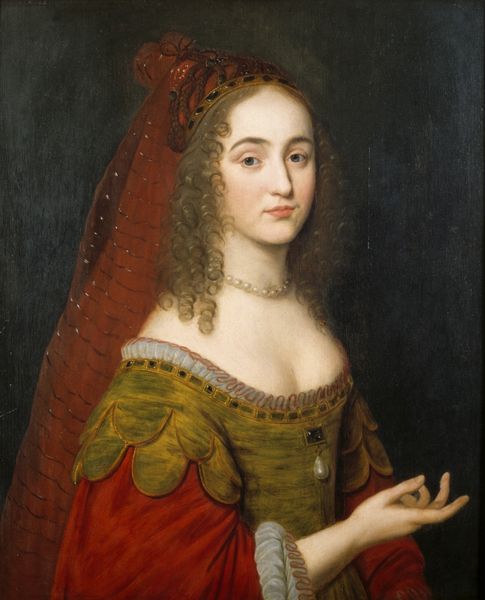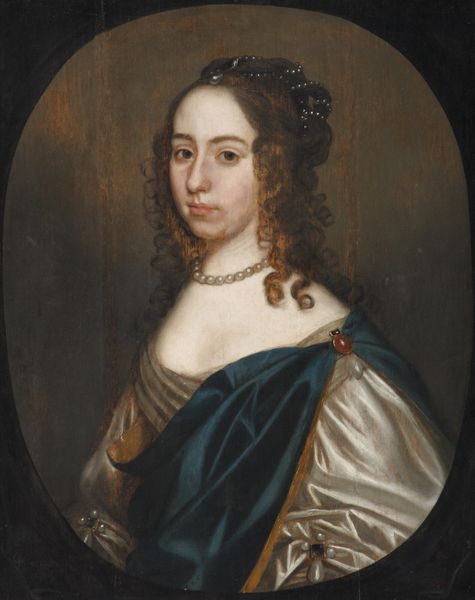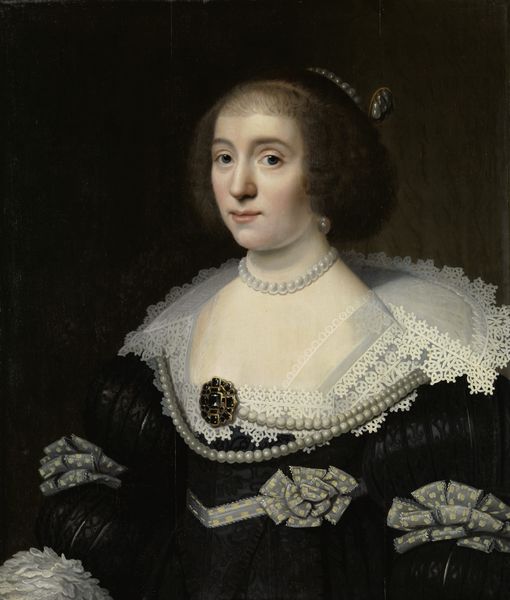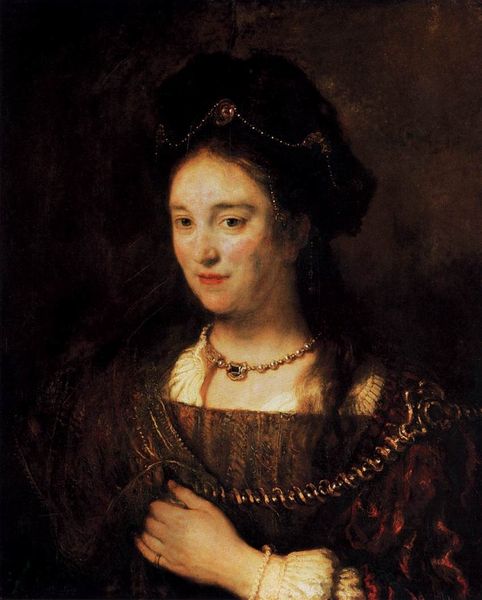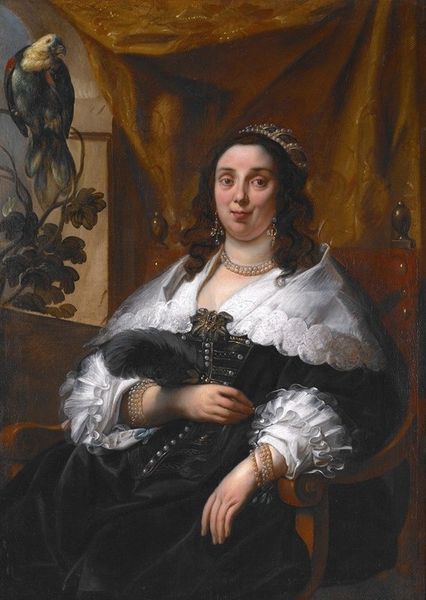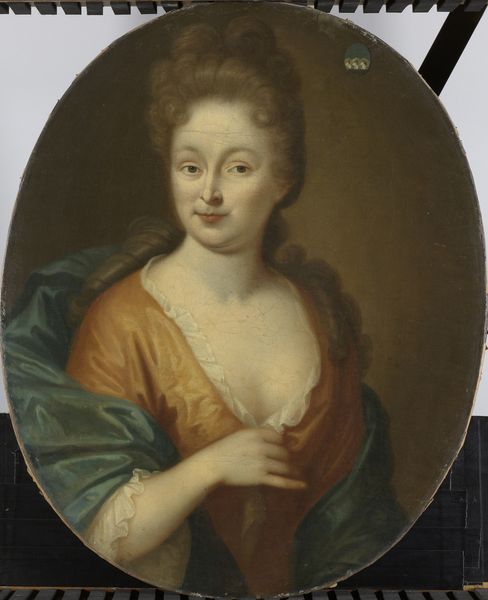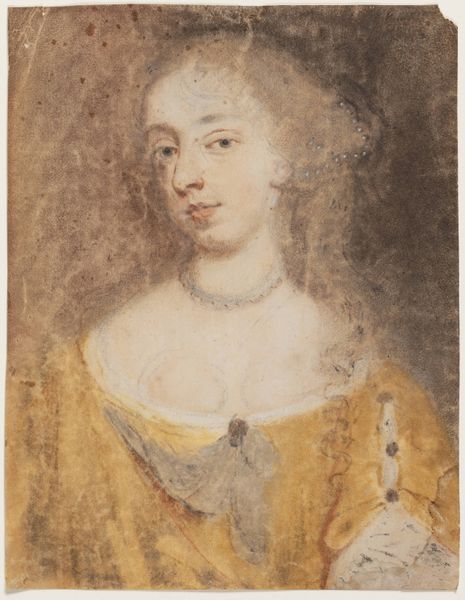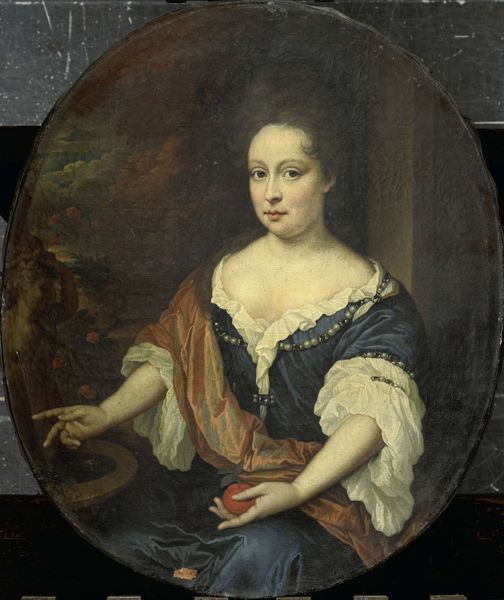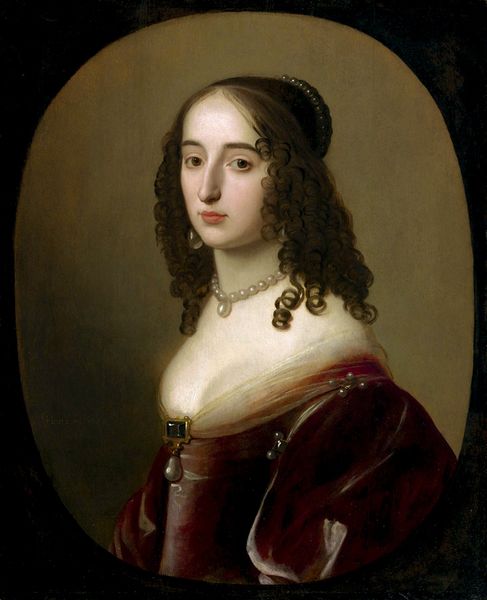
painting, oil-paint
#
portrait
#
baroque
#
painting
#
oil-paint
#
figuration
#
genre-painting
Copyright: Public domain
Rembrandt van Rijn painted this portrait of a lady with a lap dog in the Dutch Golden Age. She holds a small dog, a symbol of fidelity and companionship, recurring through art history. Consider the dogs in Renaissance portraits, often nestled in the laps of noblewomen, echoing themes of loyalty and domesticity. This motif is also present in ancient Roman sculpture, where dogs are symbols of faith. Yet, over time, its symbolism shifts. In the medieval era, dogs could represent both fidelity and base instincts, reflecting a more conflicted view. Rembrandt's lady conveys both security and melancholic isolation. The act of cradling, repeated across centuries, from madonnas holding infants to grieving mothers, engages our own primal memories of comfort. This archetypal gesture speaks to our collective subconscious, resonating on a deeper, emotional level. It is this layering of meaning, this cyclical return of symbols, that reveals the enduring power of images.
Comments
No comments
Be the first to comment and join the conversation on the ultimate creative platform.
